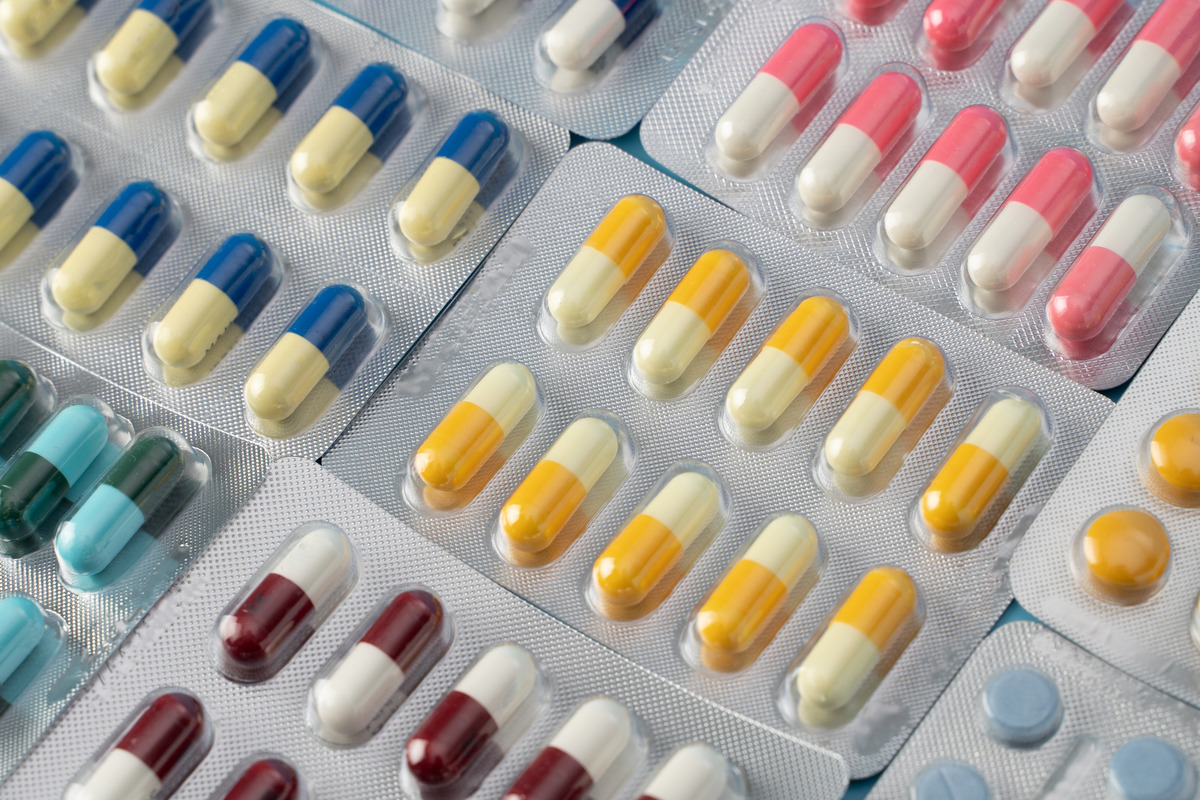How Anti-Counterfeit Technology Protects the Pharma Supply Chain — and Beyond
By Covectra | Posted on November 13, 2025

Counterfeit activity affects nearly every industry. The OECD and EUIPO’s Mapping Global Trade in Fakes 2025 report estimates that $467 billion in counterfeit and pirated products entered global trade in 2021, equal to roughly 2.3% of worldwide imports.
Although those numbers span all categories of goods, regulated supply chains feel the impact acutely because authenticity and traceability influence safety, compliance, and operational oversight.
Organizations face issues such as:
- counterfeit entries at authorized distributors
- limited authentication during receiving or field inspections
- relabeling and diversion into secondary markets
- gaps in visibility after product leaves the manufacturing site
Teams in industries such as pharmaceuticals, animal health, food and beverage, automotive, and consumer products now look for technology that strengthens oversight without disrupting existing workflows. A combination of product authentication technology, serialization and traceability, and advanced security labels helps limit counterfeit infiltration and supports verification throughout distribution.
This post outlines how anti-counterfeit technology functions across industries and how serialization, authentication, and brand protection solutions contribute to stronger supply chain performance.
Key Takeaways
- Counterfeiting affects multiple sectors. Pharmaceuticals, automotive, animal health, food and beverage, and consumer products continue to face rising counterfeit activity.
- Layered protection improves product verification. Combining product authentication technology, serialization and traceability, and advanced security labels strengthens oversight throughout distribution.
- Serialization supports supply chain authentication. Unique identifiers and traceability records help detect inconsistencies and support regulatory expectations in industries such as pharmaceuticals.
- Authentication tools assist inspectors and distributors. Mobile scanning, optical markers, and cloud-based verification help teams validate product identity at receiving and field checkpoints.
- Physical and digital methods work best together. Integrated approaches offer more dependable protection than any single anti-counterfeiting solution on its own.
Growing Counterfeit Risks Across Global Supply Chains
Counterfeiting continues to expand across regulated and non-regulated sectors. Recent findings show the scale and diversity of the issue:
- Substandard and falsified medical products remain widespread. WHO reports that 1 in 10 medical products in low- and middle-income countries is substandard or falsified.
- Automotive components continue to be a major target. U.S. Customs and Border Protection reports that it seized more than 211,000 counterfeit automotive parts in fiscal year 2024, nearly double the number seized the previous year, including more than 490 counterfeit airbags—over 10 times the number seized in fiscal year 2023. Homeland Security Investigations has approximately 40 open investigations into counterfeit automotive parts.
- Investment in anti-counterfeit solutions continues to rise. Persistence Market Research estimates that the anti-counterfeit pharmaceuticals packaging market will grow from $130.5 billion in 2024 to $254.3 billion by 2031, reflecting a 10% CAGR.
These figures show how easily counterfeiters exploit weaknesses in distribution, particularly when verification relies on simple barcodes or disconnected documentation. Supply chain and regulatory teams now look for tools that support consistent authentication during packaging, shipping, receiving, and field inspections.
Anti-Counterfeit Technology: Core Categories Used Across Industries
Anti-counterfeit technology is an umbrella term covering multiple layers of physical and digital protection. Supply chain and quality teams typically work with a combination of the following categories.
Serialization and Traceability in Pharma and Non-Pharma Supply Chains
Serialization creates a unique identifier for each saleable unit. When managed through track and trace systems, these identifiers help supply chain teams confirm where a product was manufactured, how it moved through distribution, and whether its handling aligns with regulatory or internal requirements.
Key elements include:
- Aggregation and de-aggregation events
- EPCIS-based traceability records
- Verification at shipping and receiving
- Data exchange between trading partners
In pharmaceuticals, serialization supports DSCSA requirements. Sectors like animal health, food and beverage, and automotive increasingly adopt similar approaches to detect unauthorized product, reduce returns fraud, and maintain chain-of-custody clarity.
Solutions such as Covectra’s AuthentiTrack provide an example of how organizations use serialization and traceability to manage regulated workflows, communicate with trading partners, and maintain supply chain authentication from packaging lines to downstream distributors.
Advanced Security Labels for On-Product Protection
Physical security features make it more difficult for counterfeiters to recreate packaging, labels, or product identifiers. These features can be overt, covert, or forensic in nature.
Common approaches include:
- Multi-layer labels
- Randomized fiber patterns or micro-printing
- Optically variable markers
- Tamper-evident materials
- Digital identifiers embedded within the label design
These security layers create a visible or scannable signature that is difficult to replicate. When paired with digital verification, they become an important part of brand protection solutions for pharmaceuticals, consumer goods, cosmetics, automotive parts, and food and beverage products.
For example, anti-counterfeiting solutions like Covectra’s StellaGuard integrate overt and covert physical elements with mobile authentication, enabling inspectors, retailers, or customers to confirm authenticity with a simple scan.
Product Authentication Technology for Inspectors, Distributors, and End Users
Authentication tools give stakeholders a direct way to validate products during transit, at receiving checkpoints, or at point of sale. These tools often rely on:
- Mobile scanning capabilities
- Cloud-based verification services
- Optical markers integrated into packaging
- QR-based or 2D code-based identifiers with built-in security patterns
- Algorithms that detect label tampering or duplication
This combination helps supply chain teams monitor incoming goods, flag unexpected serial numbers, identify potential diversion, and confirm whether a product matches its digital identity. Mobile verification is particularly useful in industries where inspectors and retailers operate across diverse environments, such as animal health, consumer goods, food distribution, and automotive service networks.
Track and Trace Systems for Full Supply Chain Visibility
Track and trace systems support supply chain authentication through real-time or near-real-time visibility as goods move between trading partners. These systems help teams:
- Monitor shipments
- Confirm custody events
- Detect gaps or anomalies
- Reduce the likelihood of unauthorized product entering legitimate channels
Serialization data feeds into these systems, allowing quality and regulatory teams to validate both product identity and movement patterns. When traceability is paired with authentication, organizations gain a more dependable way to detect counterfeit activity and prevent misuse of legitimate packaging.
How Anti-Counterfeit Technology Protects the Pharmaceutical Supply Chain
Pharmaceutical supply chains operate under strict regulatory and operational expectations, and anti-counterfeit technology supports several core workflows.
Product Verification
Serialized identifiers, advanced security labels, and mobile scanning give pharmacies, distributors, and wholesalers reliable ways to confirm product origin.
Detection of Counterfeit Entries
Authentication tools help teams review products when anomalies appear at receiving, during audits, or in response to market reports.
Support for DSCSA Requirements
Systems that manage serialization and traceability help manufacturers, repackagers, 3PLs, and dispensers maintain required data and respond to verification requests.
Stronger Oversight of Returns and Reverse Logistics
Unique codes and authentication layers help identify products returned under fraudulent conditions or relabeled for secondary markets.
Visibility Beyond the Shipping Dock
On-product authentication tools give downstream partners ways to validate products independently, strengthening trust across distribution networks.
Using solutions like AuthentiTrack for serialization and StellaGuard-style authentication as an illustrative example, manufacturers can combine physical and digital layers to reduce inconsistencies and strengthen oversight across audit points.
Protecting Non-Pharma Supply Chains: Automotive, Animal Health, Food & Beverage, and Consumer Products
Organizations outside pharmaceutical manufacturing face similar risks, including:
- Fraudulent relabeling
- Unauthorized production
- Counterfeit components entering repair networks
- Repurposed packaging in online marketplaces
- Diversion of products intended for specific regions
Here are examples of how anti-counterfeit technology supports each sector.
Automotive
Part authenticity affects safety, performance, and warranty integrity. Serialization and advanced security labels help parts distributors and service centers confirm authenticity, especially for high-value components.
Animal Health
Vaccines, feed additives, and medications require reliable verification. Authentication technology helps veterinarians and distributors confirm label integrity and detect relabeling or repackaging attempts.
Food and Beverage
Brand protection solutions guard against counterfeit spirits, oils, supplements, and packaged foods. Security labels provide visible tamper evidence and help retailers validate product origin in the food and beverage sector.
Consumer Products
High-value consumer goods — including electronics and personal care products — benefit from authentication methods that help retailers and customers confirm packaging integrity and detect counterfeit entries sold through unauthorized marketplaces.
Why Combined Digital and Physical Security Offers Stronger Protection
Most supply chain teams rely on a layered approach that includes:
- Serialized identifiers for digital traceability
- Mobile authentication for field-level validation
- Advanced security labels to limit successful replication
- Track and trace systems to monitor movement patterns
The combination helps organizations detect inconsistencies earlier, respond to verification requests faster, and limit the likelihood of counterfeit entries.
What Supply Chain Teams Should Look for in Anti-Counterfeiting Solutions
A reliable anti-counterfeit strategy often includes:
1. Scalable serialization and traceability
Support for EPCIS data exchange and unit-level identifiers.
2. Mobile-friendly authentication tools
Scanning methods that work for distributors, retailers, and inspectors.
3. Multi-layered advanced security labels
A mix of overt and covert markers integrated into the packaging.
4. Integration with ERP, WMS, and packaging-line systems
For consistent data flow and validation during key events.
5. Real-time visibility into verification activity
Useful for detecting diversion or unusual scanning patterns.
6. Support for cross-industry deployments
Pharma, automotive, consumer goods, food and beverage, and animal health.
Solutions like AuthentiTrack and StellaGuard offer a reference example of how these capabilities function together in an integrated authentication and traceability environment.
Anti-Counterfeit Technology for Stronger Supply Chain Authentication
Anti-counterfeit technology supports more reliable supply chain authentication by combining serialization and traceability, advanced security labels, and product-level verification. These tools help organizations confirm product origin, detect irregularities earlier, and reduce opportunities for counterfeit entries across pharmaceuticals, animal health, automotive, food and beverage, and consumer products.
Contact Covectra
You may be assessing solutions that reinforce existing workflows while improving supply chain authentication. We design our serialization and authentication technologies to meet those needs. Don’t hesitate to contact us to start a conversation. We are here to help.
Frequently Asked Questions About Anti-Counterfeit Technology
What industries benefit most from anti-counterfeit technology?
Pharmaceuticals, automotive, animal health, consumer goods, and food and beverage companies regularly use serialization, authentication tools, and security labels to protect against counterfeit entries and product diversion.
How does serialization help detect counterfeit goods?
Serialization assigns a unique identifier to each packaging level, allowing supply chain teams to verify product origin, track movement, and identify inconsistencies in custody or labeling.
Are mobile authentication tools reliable for field inspections?
Many modern authentication tools rely on a combination of optical markers, cloud-based verification, and unique label signatures, giving inspectors and retailers practical ways to confirm authenticity.
Do advanced security labels deter counterfeiters?
Labels with multi-layer, randomized, or optically variable elements create packaging signatures that are difficult to replicate, especially when paired with mobile verification.
How do food and beverage brands use anti-counterfeiting solutions?
Many products use security labels or serialization techniques to provide visible tamper evidence, enable authentication during audits, and support brand protection in distribution and retail environments.
Read More
Serialization in Pharma: Driving Compliance, Safety, and Traceability
EPCIS and DSCSA: How Serialization Supports Compliance
What Is Pharmaceutical Serialization and Why Is It Critical Today
